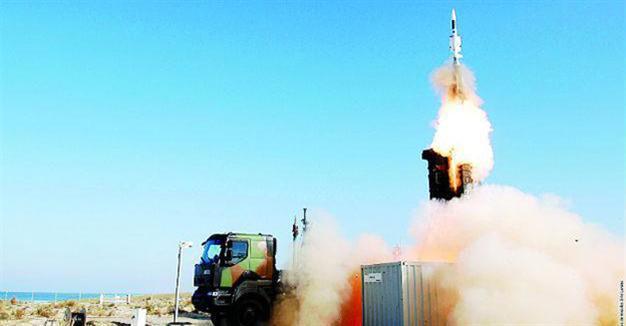Confusion over Turkey’s air defense system
Burak Bekdil
 In 2013, Turkey selected, over European and U.S. rivals, a Chinese contender for the construction of its first long-range air and anti-missile defense system. Last November it scrapped that competition, saying two local companies would instead build the air defense system. Now, it has invited the same bidders to cooperate with the Turkish companies for the development of the system while unofficially courting for the purchase of a different system. When I asked a senior defense procurement official for some clarification, he replied with one word: “Confusion.”
In 2013, Turkey selected, over European and U.S. rivals, a Chinese contender for the construction of its first long-range air and anti-missile defense system. Last November it scrapped that competition, saying two local companies would instead build the air defense system. Now, it has invited the same bidders to cooperate with the Turkish companies for the development of the system while unofficially courting for the purchase of a different system. When I asked a senior defense procurement official for some clarification, he replied with one word: “Confusion.”In September 2013, the winner of the Turkish contract was China Precision Machinery Import-Export Corp. (CPMIEC), which offered a $3.44-billion solution. That decision brought Turkey under heavy pressure from its NATO allies and while negotiating with the CPMIEC Turkey also launched parallel talks with the U.S. partnership of Lockheed Martin and Raytheon, maker of the Patriot system, and with European Eurosam, maker of the SAMP/T.
But in November 2015 Ankara said it had canceled the three-way competition. Two state-controlled companies, military electronics specialist Aselsan and missile systems maker Roketsan would be tacked with developing long-range air defense capabilities.
Last week, Turkey’s top defense procurement official, Ismail Demir, head of the Undersecretariat for Defense Industries (SSM), said Turkey had the ability to build a planned long-range missile system domestically, but he did not rule out the possibility of working with companies that had previously submitted bids in a tender (CPMIEC, Lockheed Martin and Raytheon and Eurosam).
“We could produce the long-range missile system locally. We could also evaluate opportunities for cooperation including those who submitted bids in the tender,” Demir told broadcaster NTV.
Demir said his staff at the SSM were weighing another option, not necessarily ruling out the option mentioned by the undersecretary. This new option is the acquisition of the Medium Extended Air Defense System (MEADS), a ground-mobile air and missile defense system intended to replace the Patriot system through a NATO program. MEADS was developed by the U.S., Germany and Italy.
“MEADS can be an option at a time when we feel increasingly threatened by a multitude of state and non-state actors,” explained one senior security official. “Building a system should be seen as priority under the current state of affairs in this part of the world.”
Defense industry sources and missile technology experts say that designing, developing and producing a local solution (through Aselsan and Roketsan) could take “up to or beyond 10 years.”
Observers say the air defense program has gained prominence, especially after the Turkish-Russian conflict sparked on Nov. 24, 2015, by Turkey shooting down a Russian Su-24 jet along Turkey’s border with Syria. Since then, Russia has visibly bolstered its military deployments around Turkey, most notably in Syria, the Caspian Sea and neighboring Armenia.
MEADS features phase-array radar which provides 360-degree coverage. It can cover as large as possible an area with fewer systems.
















